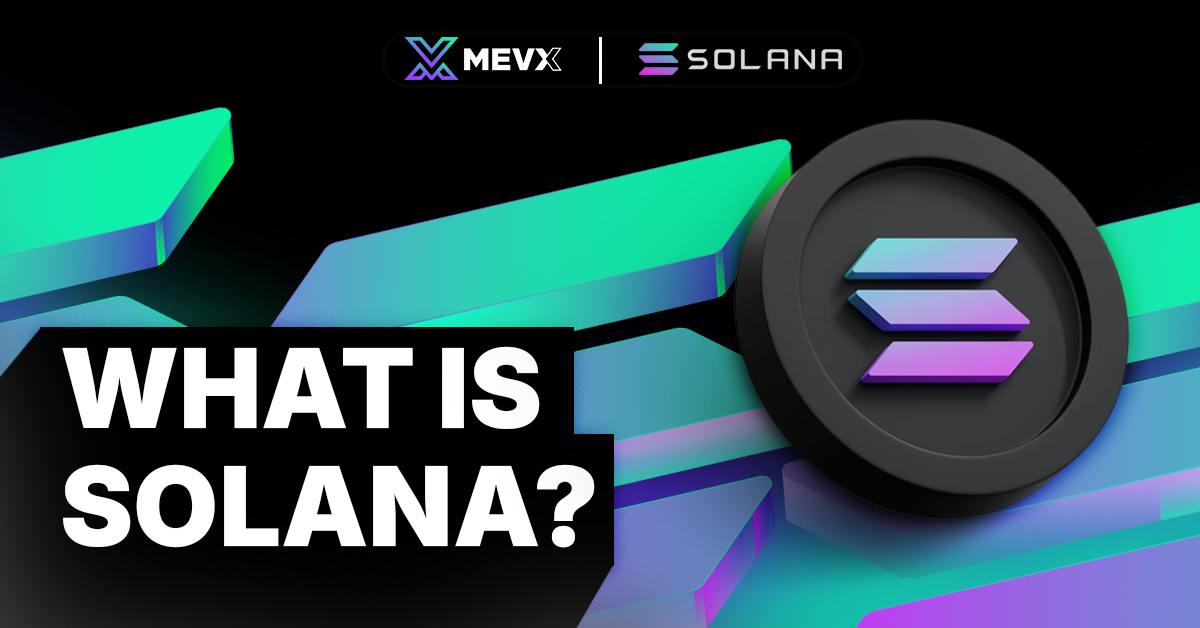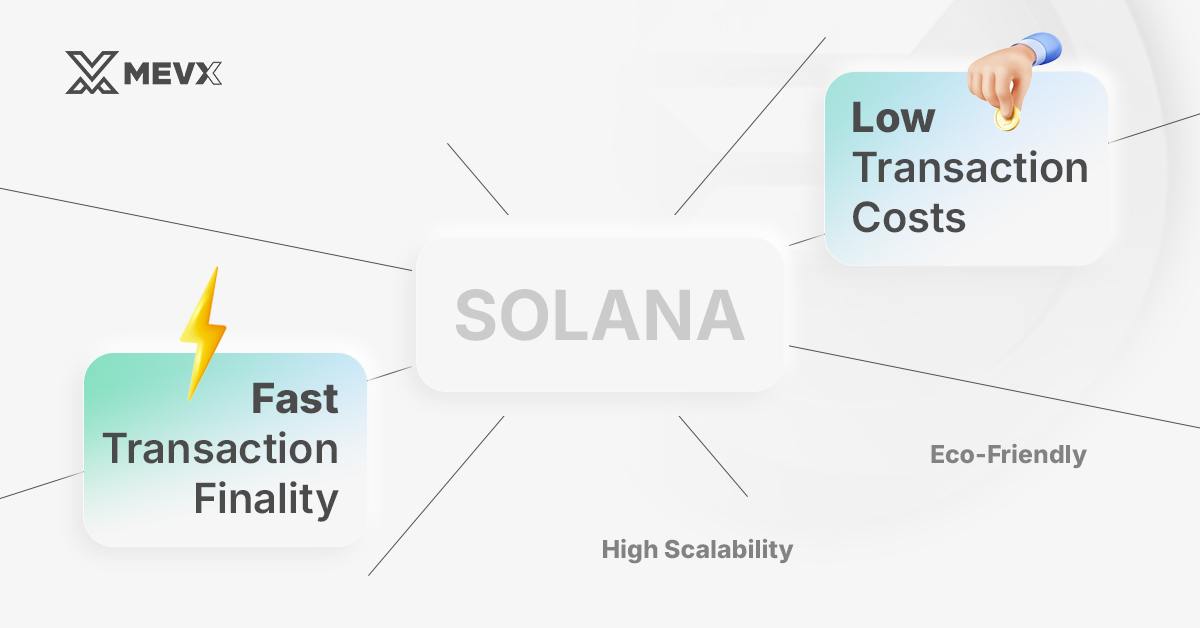The cryptocurrency and blockchain industries are evolving so quickly that many more blockchain platforms are being developed. Solana is one such platform that excels because of its emphasis on scalability, speed, and lower transaction costs. Most developers and investors are drawn to Solana because of how it seeks to extend the existing boundaries of blockchains, such as Ethereum.
This article will summarize the main points of Solana by providing a brief overview of the basics of the Solana blockchain, as well as some history and the main characteristics of the Solana project.

What is Solana?
What is Solana?
Solana is a high-throughput blockchain platform for creating dApps and scalable blockchain solutions. It was introduced to the market back in 2020 and has since earned the accolades of being fast, efficient, and at low costs. All these are available in a native cryptocurrency of the platform named SOL which is used to pay to transact, stake, and for other uses in the ecosystem.
Solana’s Origin
Solana was founded by Anatoly Yakovenko in 2017, drawing on his expertise in distributed systems from his previous work at Qualcomm. By March 2020, Solana launched as a live blockchain, quickly gaining attention for its unique approach to scalability and efficiency.
Designed to support decentralized and scalable applications, Solana is a high-performing blockchain platform due to its impressive scalability, speed, and cost-effectiveness. It is an open-source project currently managed by the Solana Foundation, based in Geneva. This platform was developed by Solana Labs, a company headquartered in San Francisco.
In 2021, Solana’s native cryptocurrency, SOL surged nearly 12,000%, reaching a market capitalization of over $75 billion at its peak. This rapid growth positioned it among the largest cryptocurrencies by market cap, a status it continued to hold as of 2024.
Blockchain Technology
In the architecture, it is important to note the basic concepts of the unit:
A blockchain is a digitally distributed database in which information is stored as transactions and is maintained by several computers, called nodes. This architecture removes the risk of a single point of failure as no one party controls the whole net, thus promoting trust and efficiency.
Decentralization allows blockchains to operate without central authorities, making them resistant to censorship and tampering.
On the same note, consensus mechanisms are the protocols by which blockchains agree on the state of their ledger, ensuring that all nodes in the network recognize and validate legitimate transactions.
Solana’s Technology
Solana’s configuration incorporates a performance scaling strategy that consists of algorithms designed to eliminate performance scalability limitations posed by the blockchain application. As a result, scalability, security, and decentralization are established. It has been conjectured that its topology could impose a ceiling of 710,000 TPS on a regular one-gigabit data transfer, and up to 28.4 million on a 40-gigabit network.
As for the consensus mechanism, Solana’s blockchain employs both, a proof of history (PoH) and a proof of stake (PoS). The PoS fundamental allows the validators, which are those satisfying the actions needed for an operation to be registered in the ledgContracte, to be based on how many coins or tokens one owns, whilst the PoH enables those transactions to be logged and authenticated more rapidly.
For more information, please visit here to see how Solana works
What makes Solana unique?
Due to a unique mix of proof of history and delegated proof of stake systems, Solana outperforms even its closest competitors namely Ethereum in terms of speed as well as costs.
Unlike proof of work in which the miners themselves determine which block comes next in a chain, or proof of stake whereby tokens that have been staked are used to determine what comes next, proof of history considers the concept of time, it utilizes time stamps as a definition of blocks for the Solana chain.
This novel design allows the observers of the blockchain to participate in voting within the same chain on the chronological ordering of disparate blocks. This keeps the chain in a relatively decentralized formation but in the same light allows for faster computations and more secure systems.
Key Features
Before delving into what Solana ecosystem, let’s outline some of its key features:

Solana’s features
- High Scalability: warrants processing thousands of transactions per second, which makes Solana one of the fastest blockchains that can be found for now.
- Low Transaction Costs: in most cases less than one cent which makes such transactions very convenient for users and developers on Solana.
- Fast Transaction Finality: transactions can be confirmed nearly instantly thus personal usable experiences equal to that of payment systems are created out of this trend as well.
- Eco-Friendly: They use a comparatively very low energy-consuming consensus in Solana unlike in other blockchains e.g. Bitcoin.
Conclusion
With its high speed, low cost, and efficiency in energy consumption, Solana is taking shape in the blockchain ecosystem. For developers who want to create efficient decentralized applications that can scale, Solana saves the day by solving the challenges that older-generation blockchains such as Ethereum have. The revolution in development and users towards the Solana platform is increasing the presence of Solana in the blockchain development world.
Share on Social Media:
